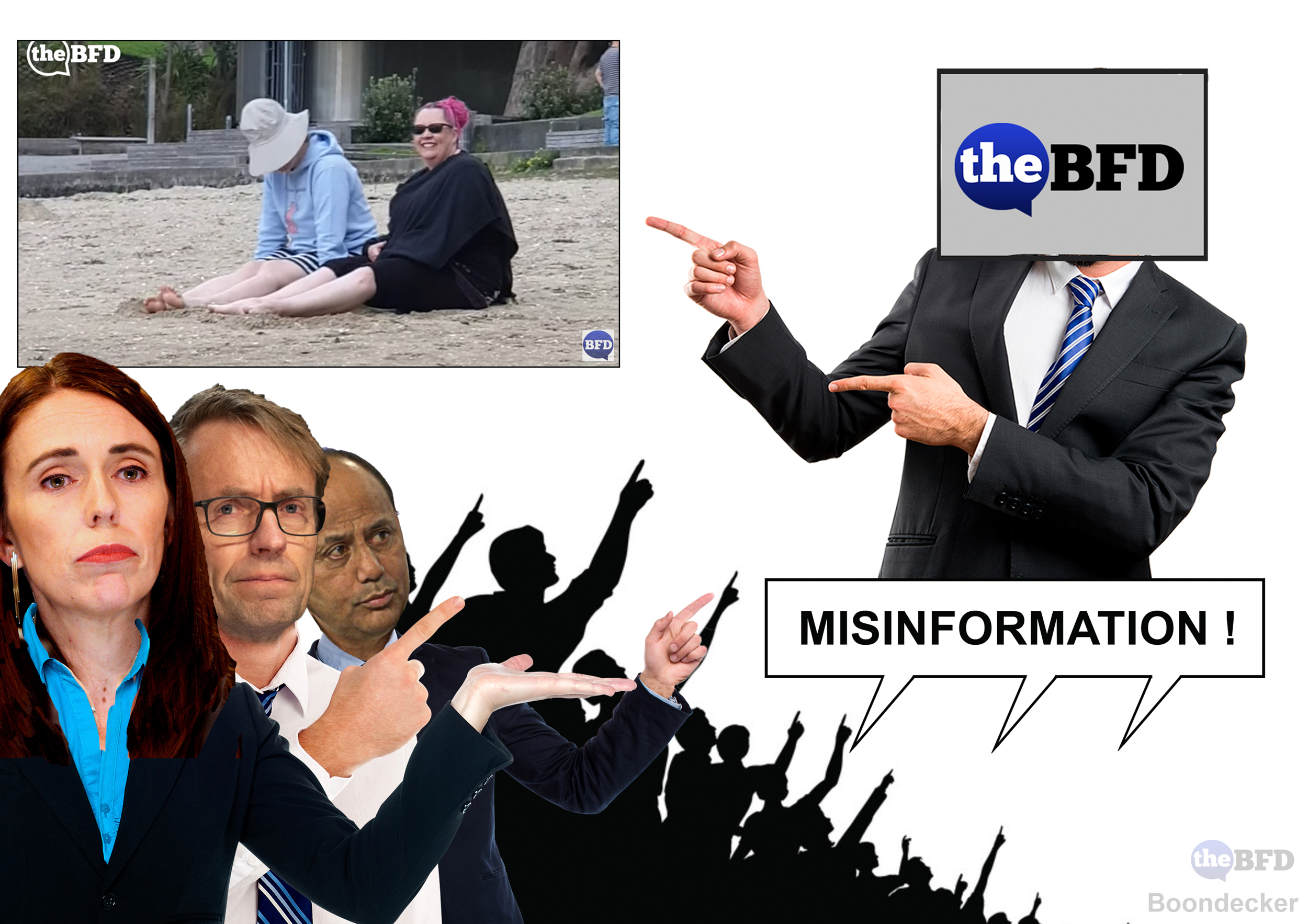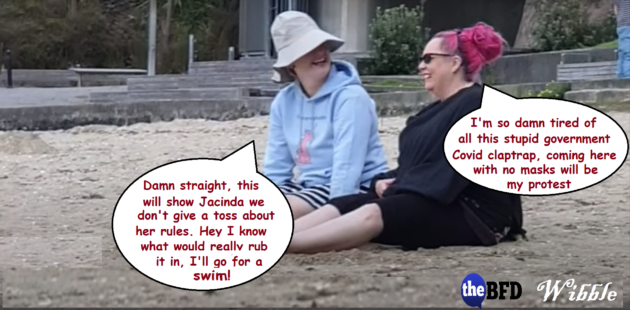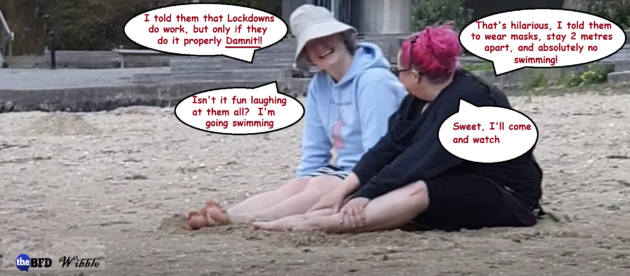Karl du Fresne
karldufresne.blogspot.com
Cabal (noun): 1. A secret intrigue. 2. A political clique or faction.
These are the two main definitions in my Oxford Dictionary. There’s a third, historical one which reveals that the word originated under King Charles II, who had a committee of five ministers whose surnames happened to begin with the letters C, A, B, A and L (who knew?).
But it’s the modern understanding of the word that I’m concerned with, because in many ways “cabal” seems an apt description of how New Zealand is being run in 2021.
Okay, cabal implies a small, secretive group, which is not what I’m talking about here. The cabal I’m talking about is neither small nor secretive. On the contrary, it’s big and far-reaching, with an agenda that’s very much out in the open. It’s a cabal so supremely confident about its power that it feels no need to be furtive.
In fact, as I’m writing this I realise I’m effectively proposing a new definition of cabal. Mine would read something like “a group wielding power and influence disproportionate to its numbers, characterised by a common ideology and constantly reinforcing itself through mutual support”.
The cabal I’m talking about reaches across politics, the bureaucracy, academia, arts, the media, the churches and even sport and business. It dominates the public conversation to the extent that dissenting voices are largely excluded, at least from traditional mainstream platforms.
The common ideology that unites this cabal is not easily summarised, since it’s multi-faceted. Some would call it “woke” – an unsatisfactory term because (a) it’s too easily resorted to and has therefore been diminished by over-use and (b) its meaning is so diffuse that it can be hard to pin down.
If forced to define the groupthink that binds the members of this cabal, I would suggest it’s an adherence to the ideology of identity politics – the idea that disadvantaged minority groups (more of which seem to emerge with every passing month) have needs, grievances and interests that, when push comes to shove, supersede those of the majority.
Identity politics involves a relentless focus not on what unites us – in other words, the interests and values that all New Zealanders have in common (such as freedom, prosperity, peace and respect for the rule of law) – but on grievance and division. Proponents of identity politics see society as an aggregation of disadvantaged groups that must compete for power and influence against a privileged and hostile majority that’s indifferent to their needs. It’s a world view that arises largely out of Marxist theory but which, oddly enough, is not endorsed by all Marxists.
These aggrieved minorities may define themselves by their ethnicity, their gender, their religion, their disabilities or their sexual identity. The desire to protect these groups and promote their interests, even if it means over-riding the wishes of the majority, has become an all-consuming objective for the cabal that now dominates New Zealand politics.
We see this reflected in many of the political initiatives pursued by the Labour government since it was freed from the restraining influence of New Zealand First. Obvious examples include proposed hate speech laws (still conveniently vague), Maori co-governance proposals, taxpayer-funded government capture of the media, centralisation of power via radical new arrangements in health and local government (e.g. the Three Waters), indoctrination of school pupils through a distorted history curriculum, and the imposition of Maori place names and Maori terminology unfamiliar to most New Zealanders without any mandate.
Now, I know what some people will be thinking as they read this. They’ll be thinking: “Hang on, there have always been cabals in politics.” Which is true: in virtually every government, there’s a select group – sometimes known as the kitchen cabinet – which calls the shots.
But what sets the 2021-style cabal apart is the sheer scale of its influence. A homogeneity of thinking extends across virtually all the public institutions that influence New Zealand life. What debate there is mainly takes place on the margins – for example, on talkback radio (which the media elite regards with contempt), in social media and on blogs like this one, where dissenting opinion can be quarantined as if it were a contagious disease.
The dangers hardly need spelling out. A country where government policies largely go unchallenged by the institutions that normally hold politicians to account is a country that risks acquiescing in the face of an authoritarian state.
Two obvious examples are academia and the media. In liberal democracies, both institutions typically subject governments to close, and often harsh, critical scrutiny. But in New Zealand in 2021, academics and the media sing from the same song sheet as the people in power. Media outlets publish just enough dissenting opinion to avoid the accusation that they function as compliant government mouthpieces. Academics, apart from a tiny minority of courageous dissenters, serve as cheerleaders.
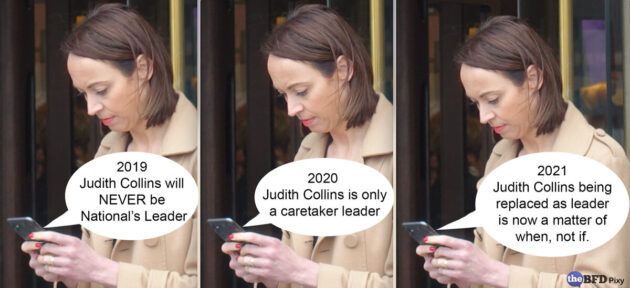
Some media go further, actively promoting narratives that favour the government; witness Newshub political editor Tova O’Brien’s sustained, malicious and deliberate undermining of Judith Collins. Contrast that with the same organisation’s very occasional (and mostly polite) reporting of government failures. O’Brien’s exposure of Kris Faafoi’s inability to explain his own hate speech proposals, and Michael Morrah’s valiant chronicling of the government’s failings and dissembling over Covid-19, stand out precisely because they contrast sharply with the deferential tone of most Newshub journalism, especially in relation to Jacinda Ardern.
Some political journalists appear to compete for the prime minister’s favour, like school children begging for the teacher to notice their upraised arms. The penalty for asking awkward questions at Ardern’s “Pulpit of Truth” sessions is that the questioner is likely to be snubbed in future. It’s a more subtle form of control than that exercised by Robert Muldoon, who banned journalists he didn’t like, but just as effective. Small wonder that Barry Soper, the most experienced member of the press gallery, has exposed Ardern’s promise of transparency as a sham.
We even see media outlets actively suppressing content for no better reason than that it’s ideologically unacceptable; witness the New Zealand Herald’s shameful refusal to publish an inoffensive advertisement for the feminist group Speak Up for Women, which has struggled to have its voice heard against a barrage of rhetoric from the fiercely aggressive transgender lobby.
Once the guardians of free speech, the press has become complicit in the suppression of opinions that run counter to the tenets of identity politics. That media outlets like the Herald now align themselves with radical fringe groups such as transgender activists, who only a few years ago would have been regarded as deranged, demonstrates how out of touch they have become with the public they purport to serve.
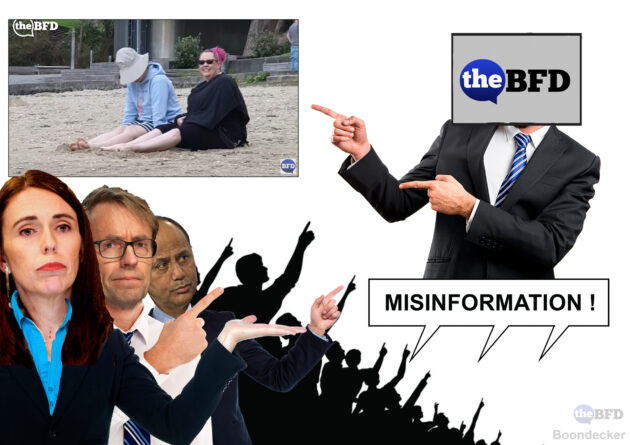
But back to that cabal. For a micro-example of how it operates, and of the cosy symbiosis between government and the media, look no further than Newshub’s recent coverage of an Official Information Act release to blogger Cameron Slater relating to two of the cabal’s most feted figures, Ashley Bloomfield and Siouxsie Wiles.
On the BFD blog, Slater had called microbiologist and media darling Wiles a rank hypocrite after she appeared to breach Alert Level 4 rules – and contravene her own public advice not to go out and socialise – by sitting with a friend on an Auckland beach, in close proximity and both unmasked.
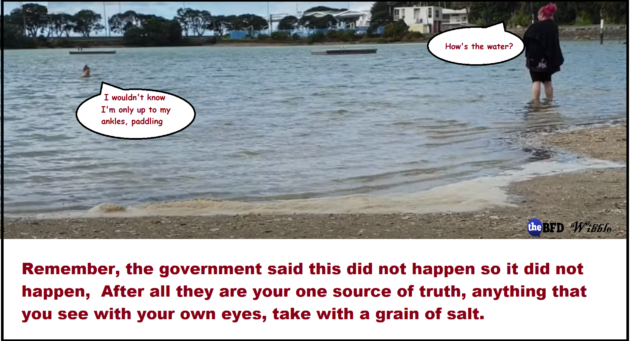
A delighted Newshub crowed that in an exchange of text messages released to Slater, Bloomfield (or as I prefer to call him, Dr Spin) told Wiles that “I don’t think that Cameron Slater has much cred these days”. The focus of the story was thus obligingly shifted from Wiles’ flouting of the lockdown rules – a matter of clear public interest – to the denigration of the right-wing blogger who potted her. It was the perfect illustration of how the cabal works to protect its members and turn its wrath on anyone who challenges it.
In this case, the self-supporting mechanisms kicked in big-time. First, there was Bloomfield reassuring Wiles in a chummy, we’re-all-in-this-together spirit that she shouldn’t be too concerned about Slater, followed by the insipid bromide “Take care” and adding: “Keep up the great work and plenty of good people … will stand by you”. Then there was the sneering tone of the Newshub report, which implied that the only person tarnished by the affair was Slater himself. (After all, if the sainted Bloomfield pronounced that Slater had no cred, who could possibly argue otherwise?)
Others soon piled on. “Kiwis on social media thought the whole affair was hilarious”, Newshub reported – citing, as evidence, a sniggering, sub-literate tweet by Hayden Donnell from RNZ’s Mediawatch: “Imagine OIA’ing a government official’s comms all their texts are just about how much you suck.”
Let’s just consider that for a moment. Donnell is paid by the taxpayer to provide fair, measured, non-partisan analysis of the news media, and here he is (a) revealing himself as unable to string a few coherent words together, and (b) joining in a social media gang-up on a figure the cabal loathes because they can’t abide anyone holding political views different from their own.
I supposed we should be grateful to Donnell for confirming just how puerile and bigoted he is. We now know not to rely on anything he says about the media we pay him to comment on. In an ideal world, he would be sacked because he has forfeited his credibility, but we know he won’t be. He can make comments like this with impunity because the cabal protects its own – in fact, applauds people for displaying bias, just as long as it’s the right type of bias.
The cabal’s influence, incidentally, reaches beyond New Zealand, and I’m not just talking about the Guardian, which is the cabal’s newspaper of choice.
In a recent BBC World Service discussion, Newsroom political journalist Marc Daalder, after playing down a key failure in the Ardern government’s management of Covid-19 by saying the tardiness of the vaccination rollout was due to “supply constraints” (not true), then smeared the country by making the claim (also untrue) that the vaccination programme prioritised whites and left “marginalised” communities behind. “The government hasn’t always been the friend of Maori communities,” Daalder said, citing the smallpox (1913) and influenza (1918) epidemics as evidence of New Zealand’s supposed indifference to Maori suffering. (Neither could be compared with the current pandemic, but hey – let’s not get too picky.)
Daalder’s casual slander aligns with a commonly held view within the cabal that New Zealand is so irredeemably racist even Ardern’s enlightened leadership can’t fix it. Overseas listeners would have formed the impression that Maori had been denied vaccination opportunities as part of a deliberate strategy when both Kelvin Davis and Peeni Henare placed the blame squarely on Maori themselves for not coming forward despite government publicity campaigns targeted directly at them.
Distortion is just one of the weapons in the armoury of the cabal that controls the public conversation. Ridicule and scorn are others, as evidenced by Newshub’s report about Slater. The purpose is to intimidate dissenters into silence. And we’re paying for it, because the media elements of the cabal are heavily subsidised by the taxpayer through the Pravda Project, aka the Public Interest Journalism Fund. That’s the cabal’s masterstroke.

